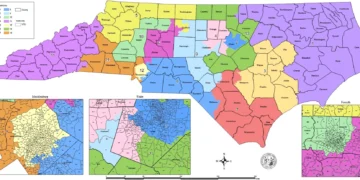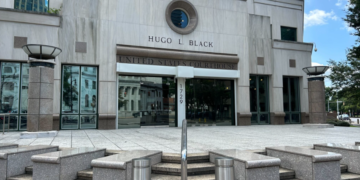May 29, 2025 Story by: Publisher
A Louisiana legislative committee on May 28, 2025 voted to reject two bills that would have added eight new majority-Black districts to the state House and Senate.
The proposals, introduced by Rep. Edmond Jordan (D‑Baton Rouge), chairman of the Legislative Black Caucus, would have redrawn the 39‑seat Senate map and 105‑seat House map to create more Black-majority districts.
Both measures failed on party-line votes: House Bill 487 (Senate districts) was defeated 9–6, and HB 488 (House districts) fell 9–5. As a result, Louisiana’s legislative boundaries will remain unchanged this session, though lawmakers could revisit redistricting in a future legislative session.
Jordan argued that the legislature should not wait for the courts to act. “By us not upholding our obligation and redrawing these maps… I think it sends a signal that we are unwilling to do so,” he told the committee.
He said drawing new maps now would show the state was “willing to comply with Section 2” of the federal Voting Rights Act.
Committee Republicans countered that the legal challenge is still pending appeal and expressed confidence that the courts will ultimately side with the state.
Federal Voting Rights Act challenge:
The push to redraw the maps stems from a 2024 federal court ruling. In February 2024, U.S. District Judge Shelly Dick found that Louisiana’s enacted 2022 legislative maps violated Section 2 of the Voting Rights Act by diluting Black voting strength.
The plaintiffs (civil rights groups and Black voters) had argued the maps unlawfully packed and cracked Black communities to limit the number of Black-majority seats. Judge Dick gave the Legislature a “reasonable period” to redraw the lines, but she did not specify exactly how many new majority-Black districts were required.
Plaintiffs in the case had urged adding six Black-majority House seats and three in the Senate to match Louisiana’s demographics. Louisiana Attorney General Liz Murrill immediately appealed Dick’s ruling to the U.S. 5th Circuit Court of Appeals, where the case remains pending.
About one-third of Louisiana’s residents are Black, yet far fewer of the state’s legislative districts reflect that. Under the current maps, only 28 of 105 House districts and 11 of 39 Senate districts have majority-Black voting-age populations.
The 2022 remap left those numbers unchanged from the prior decade’s plan (based on 2010 census data), even though the Black share of the state population grew in the 2010–2020 period. Because Black-majority districts tend to elect Democrats, adding such districts would likely reduce the Republicans’ two-thirds supermajorities in both chambers.
Proposed map changes and debate:
Jordan’s redistricting proposal would have targeted specific regions. His plan called for new Black-majority House districts in Natchitoches, Lake Charles, Shreveport and Baton Rouge, and new Black-majority Senate districts in Baton Rouge, Shreveport and Jefferson Parish.
Republicans on the committee noted that the remap would have displaced many incumbents – as many as 20 current legislators were projected to fall outside their existing districts under Jordan’s plan. They warned that many incumbents would have to move or run against other incumbents in future elections.
Jordan replied that he had considered incumbency but prioritized giving Black voters an equal opportunity to elect representatives. “What we’re trying to do is attempt to unpack and uncrack these districts so that they would comply with Section 2,” he said. (Packed districts concentrate a group’s voters into one or a few districts, while cracked districts spread them thinly across many, both tactics that can dilute voting power.)
Legislative outcome and next steps:
With the committee’s vote, no new legislative map will be adopted this year. Lawmakers noted that courts may decide the matter before the Legislature takes further action.
Republicans on the committee said they expect the 5th Circuit to defer on the legislative map appeal until after the U.S. Supreme Court rules on a related case. In that parallel case, non-Black voters are challenging Louisiana’s 2022 U.S. House map, which created a second majority-Black district. The Supreme Court heard arguments in that case in March 2025, and a decision is expected by late June.
For now, the existing state House and Senate districts remain in effect, pending these legal battles. If the federal courts ultimately uphold Judge Dick’s ruling or otherwise order new maps, Louisiana legislators will have to reconvene to redraw districts. But until then, the status quo stands.
Sources: Louisiana Illuminator / News From The States

















